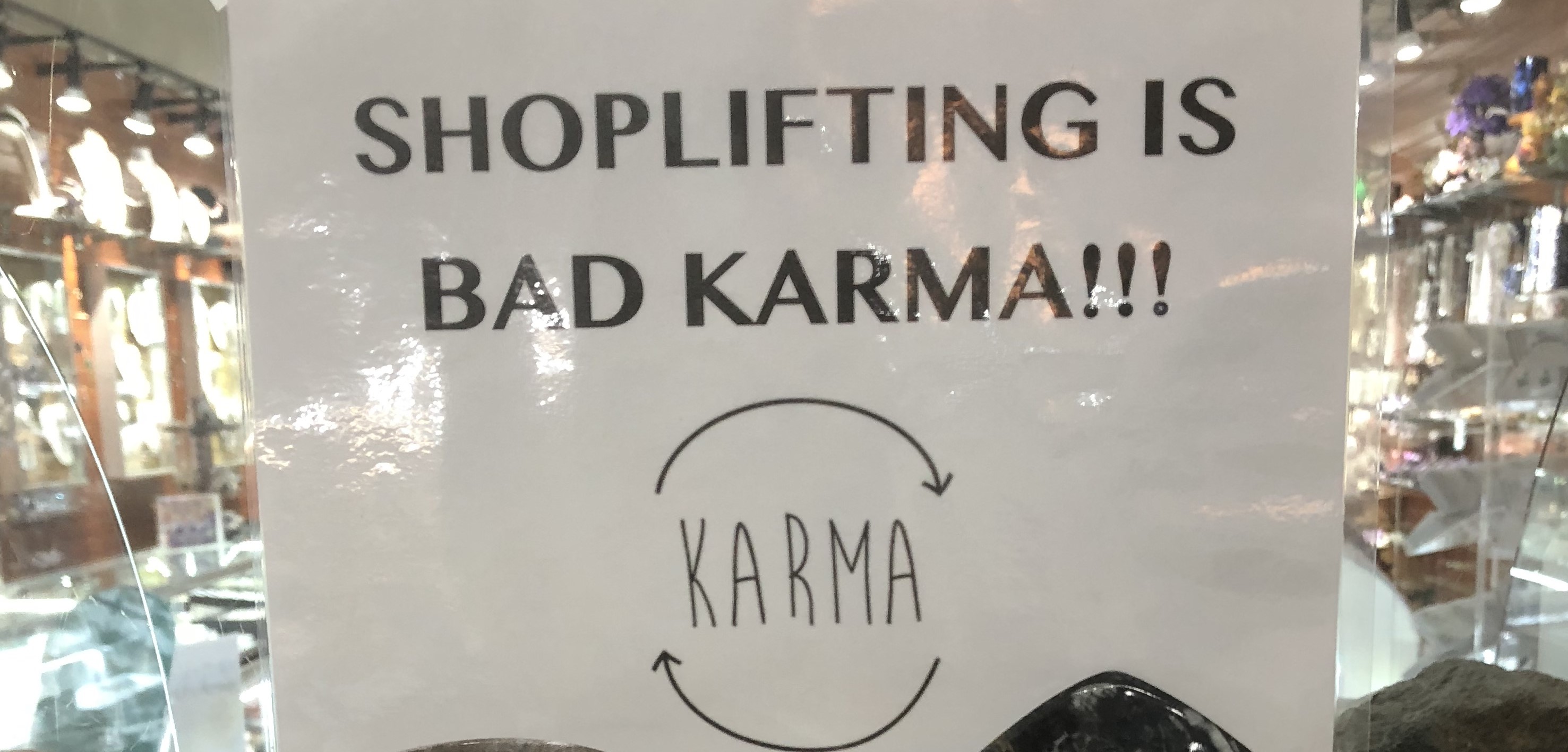Blog

It is only September and thoughts of a hopefully happy retail holiday season are already swirling through my mind. Looking back to last year, for the November- December season, retail sales in USA grew 5.3%, to $926.3 billion, falling short of the National Retail Federation’s (NRF) forecast amid continuing inflation and high interest rates. While holiday growth was less than expected, for the year USA retail sales grew 7% to $4.9 trillion, meeting NRF’s forecast of 6% to 8% growth for the year.”
For 2023, NRF has tempered USA retail growth prospects to between 4% to 6%, equaling $5.13 trillion to $5.23 trillion. The good news for the USA economy is that according to JP Morgan, it grew 2% to 2.4% in the first six months this year and is expected to continue to grow at 2% in the second half of 2023.
The elephant in the room remains inflation which is currently going in the right direction. “Core goods inflation has dropped from 12% to 0.8% over the past year, while core services inflation has only slowed to 6.1% in July from its peak of 7.3% in February. JP Morgan expects gradual improvement with inflation over the coming months, though a return to the Fed’s USA targeted 2% could take until late 2024. For the first half of 2024, USA GDP growth is projected at only 0.4%.
An additional headwind this holiday season is high credit card debt. In the United States, consumers are now carrying $1 trillion in credit card debt with the average balance at about $6,000 and more than half of credit card holders worrying about paying their debts. While higher debt, depleted pandemic savings, and inflation are introducing risk of a recession, at a global level, retail will remain resilient.
With all this mixed news, what can we expect for the 2023 holiday season? What are the key trends that will drive shopping behavior in this important shopping time of the year?
Will We Shop Till We Drop This Holiday Season?
- Details
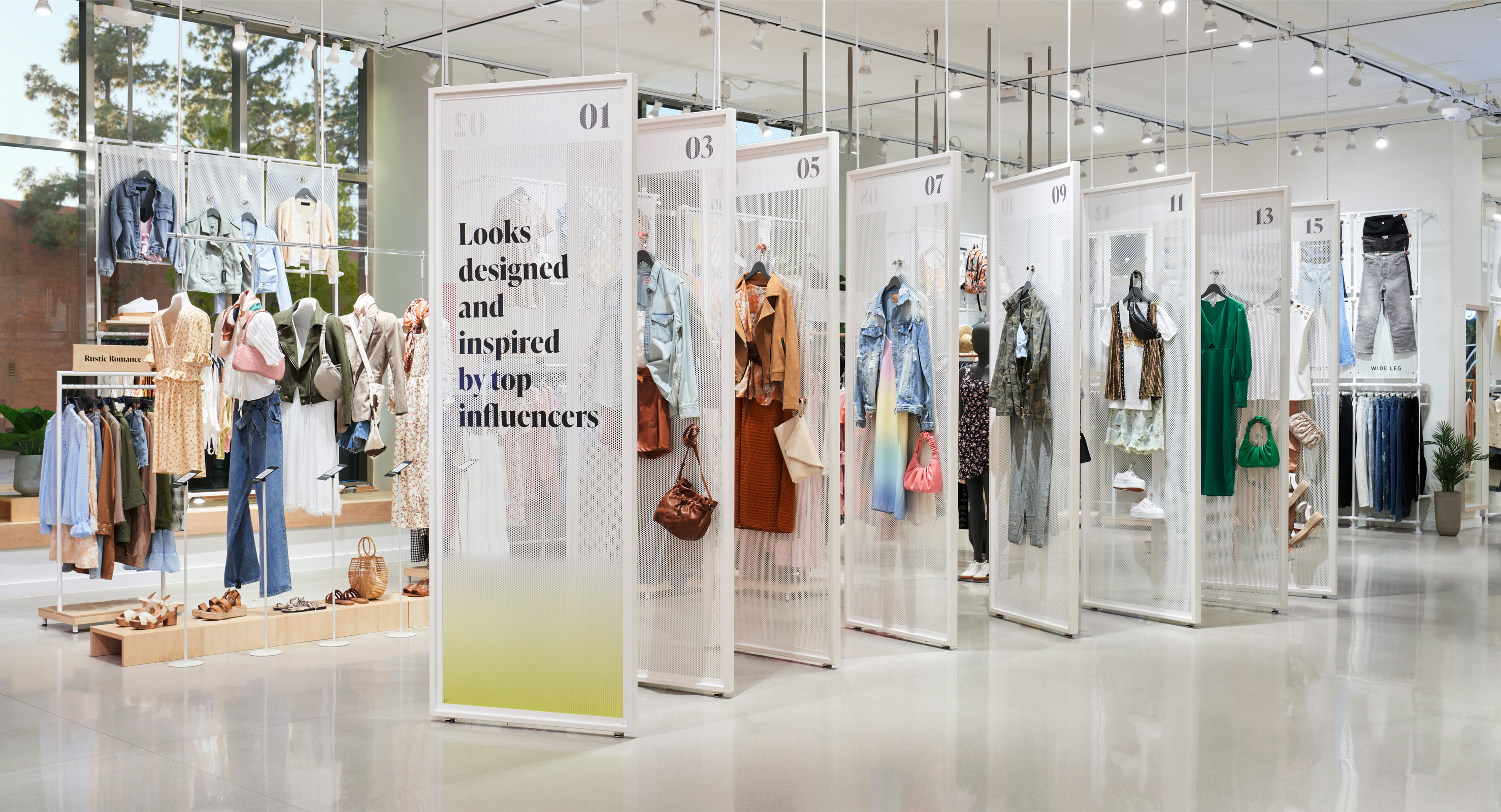
Having just finished my first book on personal branding which will be published later this year starting in the UK, you can guess that I am a big fan on the potential of the concept of branding. When it is well-executed, branding commands higher margins, creates loyal consumers, and creates that special buzz many like to follow.
The advent of smartphones and social media has increased the importance of branding. With the smartphone, we can all provide instant feedback to a brand about our experiences. Social media creates opportunities to generate viral content which increases the value of the brand.
Branding at all levels, including you as an individual, will increase in importance as digitization continues to become ubiquitous. It is for reason, that every year I look forward to the latest Kantar BrandZ most valuable global brands reports.
For the world’s top 100 most valuable brands, their value declined a surprising 20% in 2023 in the face of strong macroeconomic headwinds. The total value of the world’s top 100 global brands now stands at $6.9 trillion. As the research summarizes, reinforcing the importance of paying attention to you brand, “over the 17 years in which we have been tracking the world’s strongest brands, the companies behind the top-ranking brands have outperformed stock market benchmarks.”
This article summarizes the top 10 most valuable global brands in the key categories that I am most passionate about – Retail, Apparel, and Luxury. The actual research is very comprehensive and covers all industries and makes for a good read on differentiation strategies for growth which are critical to brands. All quotes and data in this article are from the Kantar BrandZ report.
The Top 10 Most Valuable Global Brands and New Entrants
- Details

The two hottest buzz words in all industries these days seems to be ‘digital transformation’. Linking these words was actually an evolutionary process that started in the 1970s when computer-aided designs and manufacturing were first used in business. In the 1980s enterprise resource planning was added, followed by customer relationship management in the 1990s.
The objective of these solutions was to improve efficiency and productivity by digitizing manual processes. “In the late 1990s, we saw the rise of eCommerce and online banking. These activities were initially carried out offline but were later moved online as internet speeds increased. This was followed by the introduction of social media in the mid-2000s, which revolutionized how we communicate and share information.”
The pace of change is accelerating. Survival as a company requires intensive focus on increased digital connectivity with consumers and markets.
Here are some interesting statistics of the increased digitized world:
70% of organizations either have a digital transformation strategy or are currently working on one. Global spending on digital transformation is expected to reach $6.8 trillion by 2023. 87% of business leaders think that digital transformation will disrupt their industries. Digitally mature companies are 23% more profitable than their less mature peers. The success rate of digital transformation is below 30%.This article summarizes some key charts from my ‘Disruptive Future of Retail’ global keynote on the accelerated pace of innovation. It highlights major disruptions in the retail industry, general technology trends, two recent examples of online disruption, and ends with an optimistic view on how to increase the success odds of digital transformation above that 30%.
Technology Megatrends Disrupting the World
- Details

The past two weeks have been truly inspirational in activities of continuous learning and sharing knowledge that helps us all have a brighter retail future. The first week was the keynote delivery of my latest edition on ‘The Disruptive Future of Retail’ presentation. The venue was the beautiful PGA National Resort in Florita were 200+ IT professionals attended the Retail Technology Solutions Summit. Impressed by both the format and the engagement of the audience during, after my presentation, and throughout the conference.
The second week included the launch of my new webinar Retail Technology Series Series which focuses on disruptive retail technologies, new innovative retail revenue streams, and once in a while a check-in on the state of the industry. Over 400 people registered for the first episode which was titled ‘AI’s $9.2 Trillion Impact on Retail through 2029’.
Additionally, in the second week, I had the pleasure of joining senior retail leaders, solution providers, and academia members at the Consortium for Operational Excellence in Retail at Wharton, University of Pennsylvania. The 2023 edition included highly interesting research innovation topics plus some candid retailers’ reflections on the past 30 years and projections on the next 30 for the retail industry.
This article summarizes just a few of the charts included in the keynote at PGA National. If you would like a copy of the full presentation, reach out either on LinkedIn or through my personal website Contact Page.
The full presentation covers the latest global economic headwinds, the challenges facing retail, insights on why retail will continue to be resilient, the pace of technology innovation, the critical future retail technologies, the smarter store of the future, and as title implies, a review of the AI revolution that is underway, including its impact on the retail industry.
Global Headwinds Persist
- Details
“The unfortunate fact is that violent incidents are increasing at our stores and across the entire industry. And when products are stolen, simply put, they are not longer available for guests who depend on them. Beyond safety concerns, worsening shrink rates are putting significant pressure on our financial results.” – Brian Cornell, Target CEO, Wall Street Journal May 21, 2023
Earlier this month Target highlighted that organized retail crime “will fuel $500 million more in stolen and lost merchandise this year compared with a year ago." Other major retailers triggering the same retail theft alarms include Home Depot, Walmart, Best Buy, Walgreens, and CVS.
The three major challenges which from discussions with technology companies and retailers have been elevated as the highest USA priorities for loss prevention are active shooter, safety, and organized retail crime. What is the latest data telling us? Is technology delivering on its solution promise? How do we ultimately solve this problem?
81% Increase in Shrink
- Details
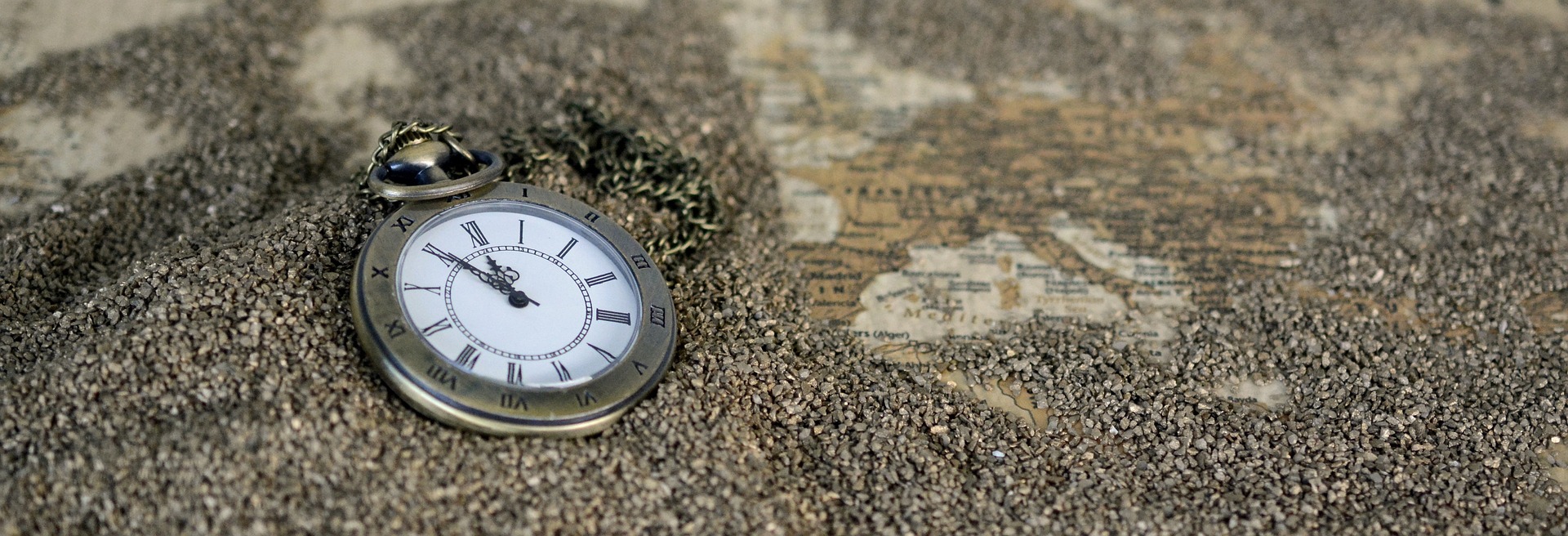
A key trait that has been driving my career and my entire life is continuous learning. Where this started was a mystery until last week. Couple of possibilities:
Is it the environment in being born in one continent, growing up in another, and then returning to the home country often in later age? Is it genetic from a family line of deep thinkers that aspired to more than their original start in life?My father of 92 years passed away this past week in Italy and in his memory, let me share some thoughts on what has shaped his and my life and how I hopefully can help you understand yours better.
Continuous Learning Redemption from Hardship
- Details

In a previous CEO role, I was on a mission to transition physical security infrastructures into smart highly visual advertising delivery platforms. The rationale is similar to what happening with CCTV video technologies. In 2021, we crossed over 1 billion video cameras installed around the world.
Originally designed as a safety technology to monitor the launch of V-2 rockets in World War II and later taking more prominent roles as security devices, many of today's CCTV cameras are now data gathering eyes. Coupled with Artificial Intelligence and Edge Computing and renamed as Computer Vision, the CCTV camera is a key transformational technology improving many industries including retail.
Look up or the side of shelves in multiple retail formats, and in most modern retail stores you will see yourself on in-store Public View Monitors (PVMs) which were designed to increase visual deterrence against theft. Those same video monitors along with multiple other strategic locations inside the physical store are the perfect location to now add cloud-based digital advertising. Concurrently many of these screens can perform their security functions when needed, but more importantly they can also actually generate revenue for the retail chain through advertising.
PVMs are only the beginning of what is possible with digital advertising inside retail stores. There are multiple other strategic locations, including exits, point-of-sale, self-checkout, in-aisles, end-caps, on shelves, etc. where the digital advertising revolution is possible to substantially improve profitability.
The $100+ Billion Retail Media Networks Revenue Opportunity
- Details
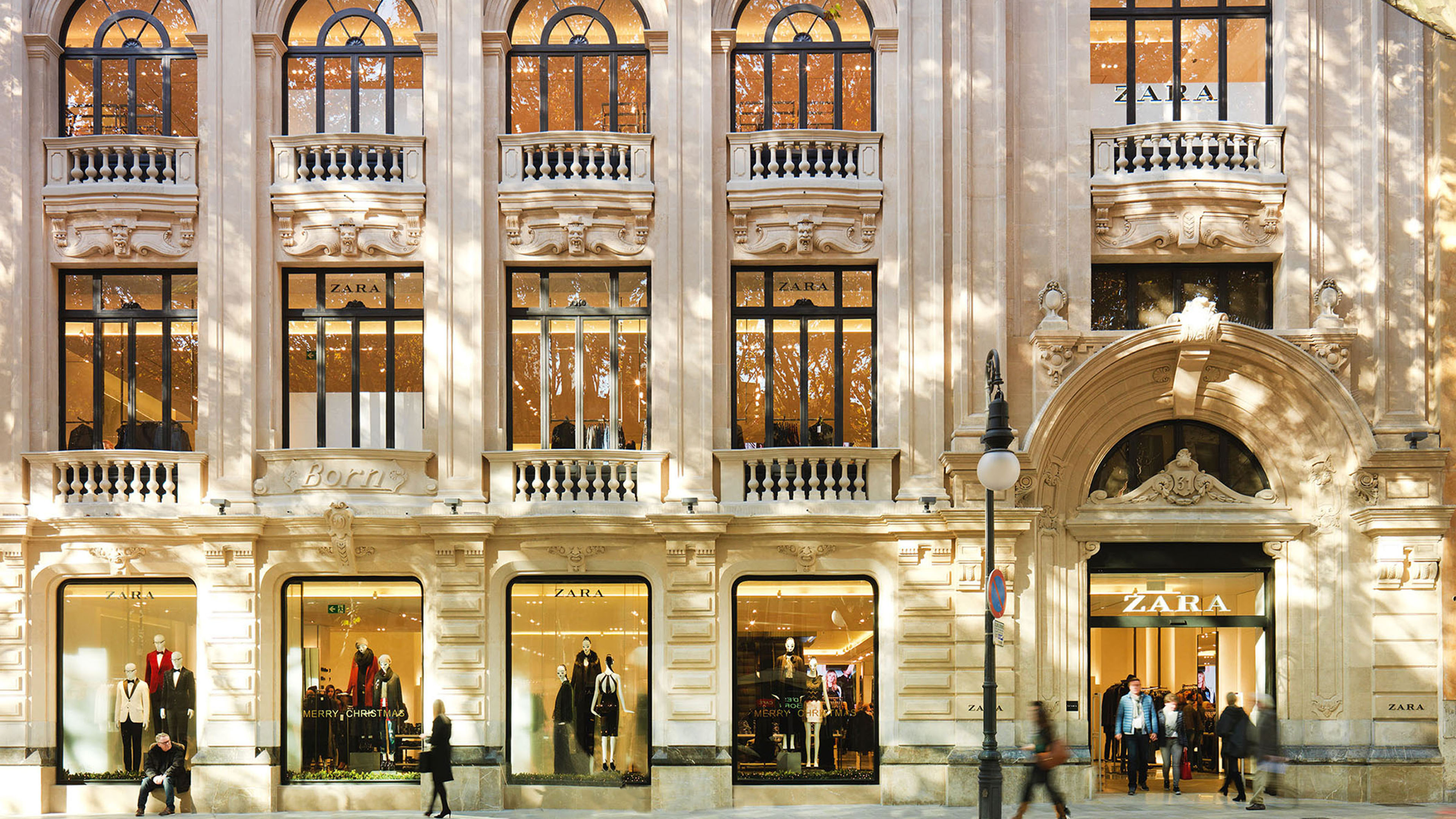
The history of RFID is long and interesting. As I wrote in a previous article, the technology has its roots in World War II. For the retail industry, the adoption fuse has been slow to burn. Multiple times, I have asked the question myself, are we there yet?
In my view, we are closer than ever to making RFID one of the key standards to address inventory visibility whose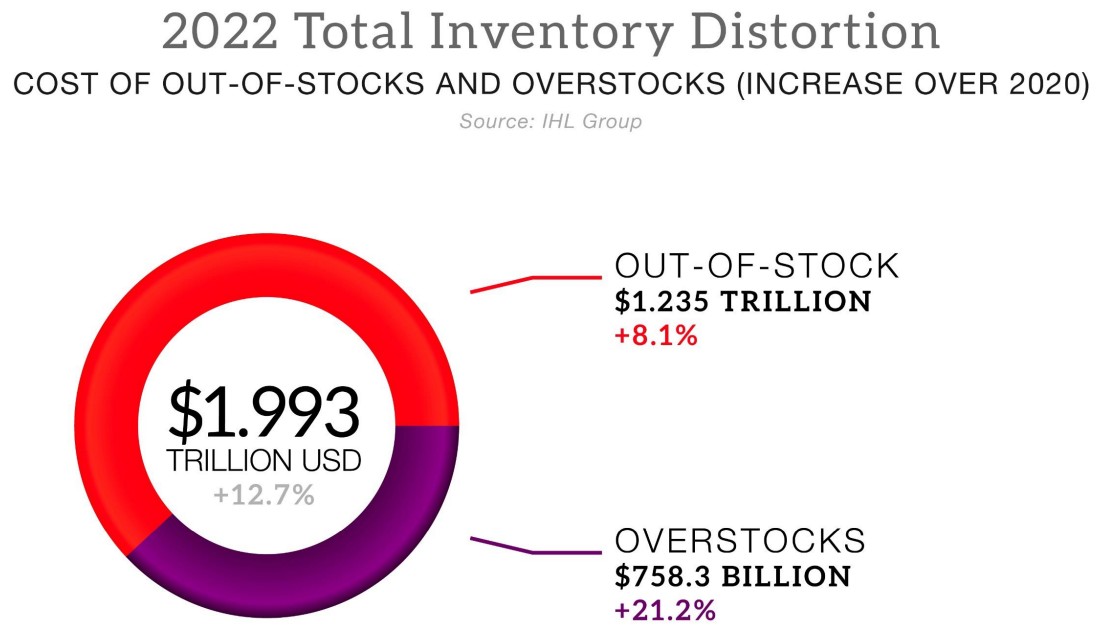 importance was accelerated by the COVID-19 pandemic. In 2022, the problem of inventory distortion worldwide totaled an astounding $1.993 trillion.
importance was accelerated by the COVID-19 pandemic. In 2022, the problem of inventory distortion worldwide totaled an astounding $1.993 trillion.
The same IHL research confirms that the number 1 reason, why customers leave your store without buying are empty shelves or out-of-stocks. "This occurred 62.2% of the time consumers didn’t buy, and panic buying in 2020 was a significant driver for this reason. In 2022, this issue overall dropped to 58.9% of the problem in the minds of consumers." By comparison the next reason for leaving the store without buying was "can't find help" at only 13.8%.
The most dramatic insight from the IHL research is inventory distortion lowers consumers trust with the retailer. Note the increase in trust in Amazon in the last two years.
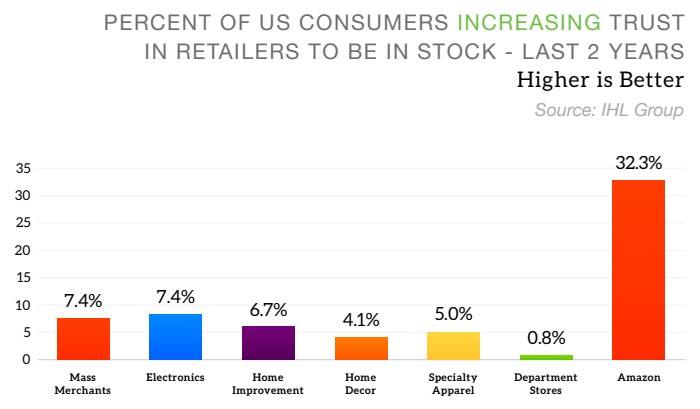
Omnichannel or harmonized retailing requires intensified focus on accurate inventory across the enterprise. RFID today is one of the leading technologies to deliver it.
Inventory Visibility as a Technology Priority
- Details
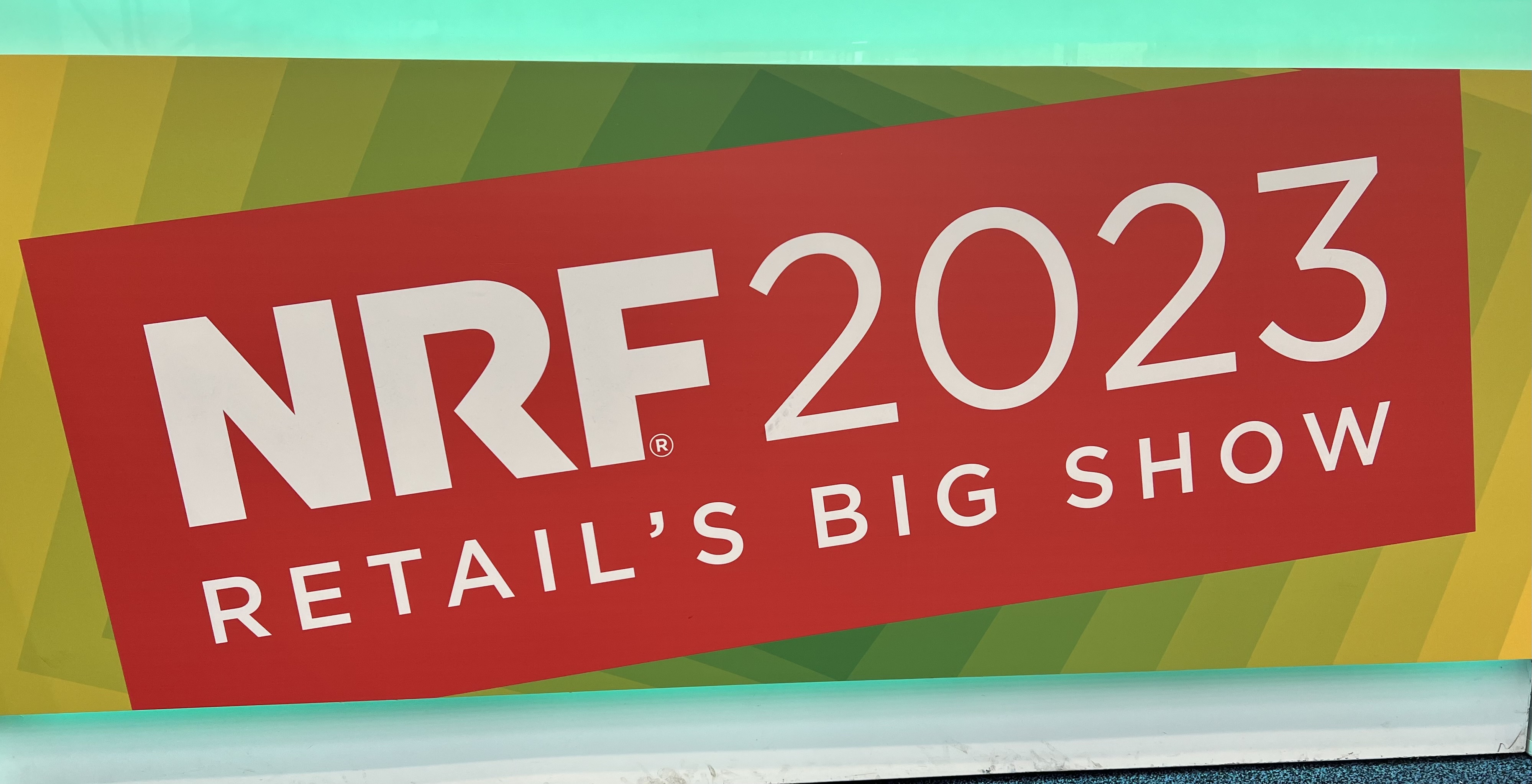
The National Retail Federation Big Show this past week in New York did not disappoint. As I summarized in my post NRF 2023 social media post:
“THAT'S A WRAP: An inspiring Retail ROI Super Saturday, an astounding number of NRF 2023 retailer meetings, a roaring 20s Rethink Retail Top 100 influencers bash, hosting the NRF Loss Prevention Council, kicking off LPRC 2023 at Bloomingdale’s, named a top 10 NRF original Twitter, on Linked-in 45,000+ impressions / 100%+ engagement, nearly 90,000 steps, launching multiple Prosegur next-gen RFID tech, trend spotting for next article, and most essential FRIENDSHIPS rekindled -- it has been an exceptional Retail Innovation Leadership few days. Thank you ALL. “
Appreciative that just prior to the opening of NRF 2023, I was named once again a Top 100 Retail Influencer for 2023 by Rethink Retail. Congratulations to everyone on this important list. Retail needs a broader set of voices more than ever as we transition to a continued disruptive future for the industry.
What were the big hits and misses of the immersive NRF 2023 week? How could the misses improve both the trade event and also create new revenue streams for retailers?
Hit 1: Start with Making a Human Difference to the World
- Details

A cornerstone of my social media growing personal brand has been the continuously updated “Disruptive Future of Retail” presentation that I have delivered on global stages in the past seven years. Crystalizing in the 2022 editions are the five strategies and the three primary technologies that will deliver a more profitable future of retail into the new year.
At the core of these strategies are two stakeholders that hold the key to what happens to retail next: the consumer and the store associate. The smartphone as now the third retail innovation megatrend has re-defined the successful retail formula.
This article summarizes the five strategies for success into 2023, along with the three technologies that are the strategic levers to their successful implementation. It closes with a summary of the smart more profitable store of the future.
The One Chart that Defines the Successful Future of Retail
- Details


